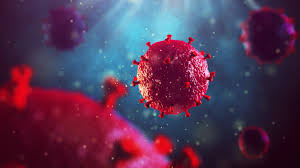Source: healio.com
The latent HIV reservoir is mostly formed soon after the initiation of treatment, suggesting that ART indirectly affects the host environment to favor the establishment of latently infected long-lived cells, researchers reported in Science Translational Medicine.
“These researchers are proposing that the virus cycles in and out of the reservoir, and that it is the introduction of antiretroviral therapy that freezes the reservoir viruses in place, like insects in amber,” Rowena Johnston, PhD, vice president and director of research at amfAR, told Infectious Disease News.
While people with HIV are on ART, HIV can persist in resting CD4+ T cells as a latent reservoir, despite the effective suppression of HIV-1 replication. Even with early ART initiation, the reservoir can form, and discontinuation of ART usually results in the “rapid rebound of virus, indicating that although therapy suppresses viral replication, HIV-1 is able to persist in an infectious state for years,” Melissa-Rose Abrahams, MSc(Med), PhD, a research officer in the division of medical virology at the University of Cape Town’s Institute of Infectious Disease and Molecular Medicine, and colleagues wrote.
However, much is still unknown about the formation of the HIV-1 latent reservoir, inhibiting progress toward a cure. Understanding when it forms may inform future research.
Abrahams and colleagues studied blood samples from nine women with HIV receiving ART who participated in the Centre for the AIDS Programme of Research in South Africa (CAPRISA) 002 cohort. The women were originally enrolled into the cohort during acute/primary HIV-1 infection.
“It’s refreshing to see these researchers look at an understudied population — namely women — and in the region of the world most affected by HIV,” said Johnston, who was not involved in the study. “Even though more than half of all people in the world living with HIV are women, only a small fraction are represented in HIV cure research.”
According to the study, the researchers compared sequences of replication-competent viruses from resting peripheral CD4+ T cells with viral sequences circulating in blood that was collected longitudinally prior to therapy.
Abrahams and colleagues assessed the genetic makeup the replicating viruses found right before ART initiation and the viruses induced from the post-therapy latent reservoir. They reported that, on average, 71% of the post-therapy viruses were genetically similar to the pretreatment viruses.
“A reservoir of HIV is formed within days of initial infection, and this reservoir cannot be cleared by antiretroviral therapy,” Johnston noted. “What is as yet unknown is whether that virus cycles in and out of the reservoir, or whether it enters the reservoir and stays for the duration of the person’s life.”
